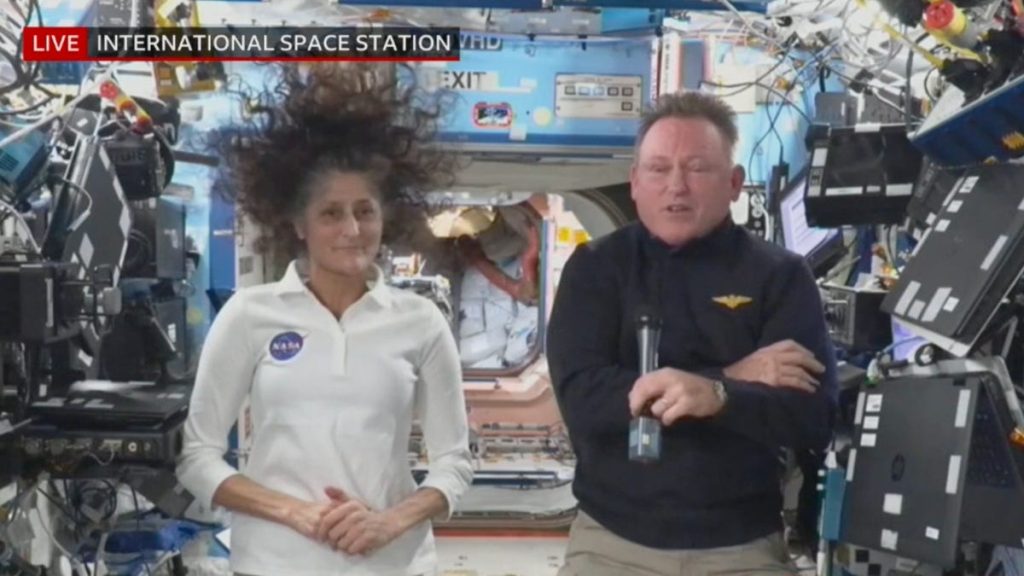Astronauts Sunita “Suni” Williams and Barry “Butch” Wilmore’s eight-day mission to the International Space Station (ISS) aboard the Boeing Starliner capsule in June 2024 has unexpectedly extended into a multi-month stay, with their return to Earth now scheduled for late March 2025. Their initial mission was to test the Starliner capsule, a crucial component in NASA’s strategy to diversify its crew transportation options and leverage private sector partnerships for space travel. However, technical issues with the Starliner, including helium leaks and thruster failures, necessitated their extended stay on the ISS while a new Dragon spacecraft is prepared for their return journey. Despite the unforeseen circumstances, Williams and Wilmore have maintained a positive attitude, embracing the opportunity to contribute to ongoing research and maintenance activities aboard the station.
The extended mission has allowed Williams and Wilmore to participate in a wide range of scientific endeavors, contributing to over 60 studies during their time in orbit. These studies encompass diverse fields including space botany and human physiology, offering valuable insights into the effects of long-duration spaceflight on the human body and the potential for sustainable life support systems in space. While they acknowledge missing their families, both astronauts have expressed a deep appreciation for the unique experience of living and working in space, highlighting the profound sense of peace and perspective it provides. Their resilience and adaptability exemplify the dedication and professionalism of astronauts who face the unexpected challenges of space exploration.
The extended stay has also provided opportunities for both astronauts to engage in extravehicular activities (EVAs), commonly known as spacewalks. Williams, already a record holder for most spacewalks by a woman, added to her tally with an EVA on January 16, 2025, alongside astronaut Nick Hague. During this spacewalk, they addressed critical maintenance tasks, including replacing a rate gyro assembly essential for the ISS’s orientation control, patching damaged light filters on a vital X-ray telescope, and preparing equipment for future maintenance on the Alpha Magnetic Spectrometer. Furthermore, a joint spacewalk by Williams and Wilmore is scheduled for January 30, 2025, with objectives including removing radio antenna hardware and conducting microbial surveys on the station’s exterior.
The delay in Williams and Wilmore’s return is attributed to the need for thorough preparation of the new Dragon spacecraft, which will also transport a fresh crew to the ISS. This new crew, comprised of Commander Anne McClain, Pilot Nichole Ayers, Japanese astronaut Takuya Onishi, and Roscosmos cosmonaut Kirill Peskov, is slated to launch in late March 2025. Their arrival will pave the way for the return of Williams, Wilmore, along with NASA astronaut Nick Hague and Roscosmos cosmonaut Aleksandr Gorbunov, who arrived on the ISS via a SpaceX Dragon in September 2024. This crew rotation highlights the intricate logistics involved in maintaining a continuous human presence in space and the collaborative nature of international space exploration.
Beyond their scientific contributions, Williams and Wilmore have also faced practical challenges during their extended stay, including an unusual odor emanating from a resupply spacecraft. While the incident raised initial concerns, NASA confirmed that air quality within the station remained within safe limits and that crew health was not compromised. Additionally, public speculation regarding the astronauts’ physical appearance in recent photos prompted a statement from NASA’s chief health and medical officer, Dr. J.D. Polk, reassuring the public of the crew’s well-being. He emphasized that crew health is closely monitored, and individualized diet and fitness plans are implemented to ensure their health throughout their missions.
The extended mission of Williams and Wilmore underscores the inherent uncertainties of space travel and the adaptability required of astronauts. While the Boeing Starliner, intended to provide an alternative crew transport option for NASA, encountered technical setbacks, the astronauts’ professionalism and commitment to the mission objectives remained unwavering. Their experience also highlights the crucial role of international collaboration and the ongoing efforts to advance human spaceflight capabilities, paving the way for future exploration beyond low Earth orbit. Despite the unexpected extension, Williams and Wilmore have embraced the opportunity to contribute to scientific discovery and further humanity’s understanding of the universe.

